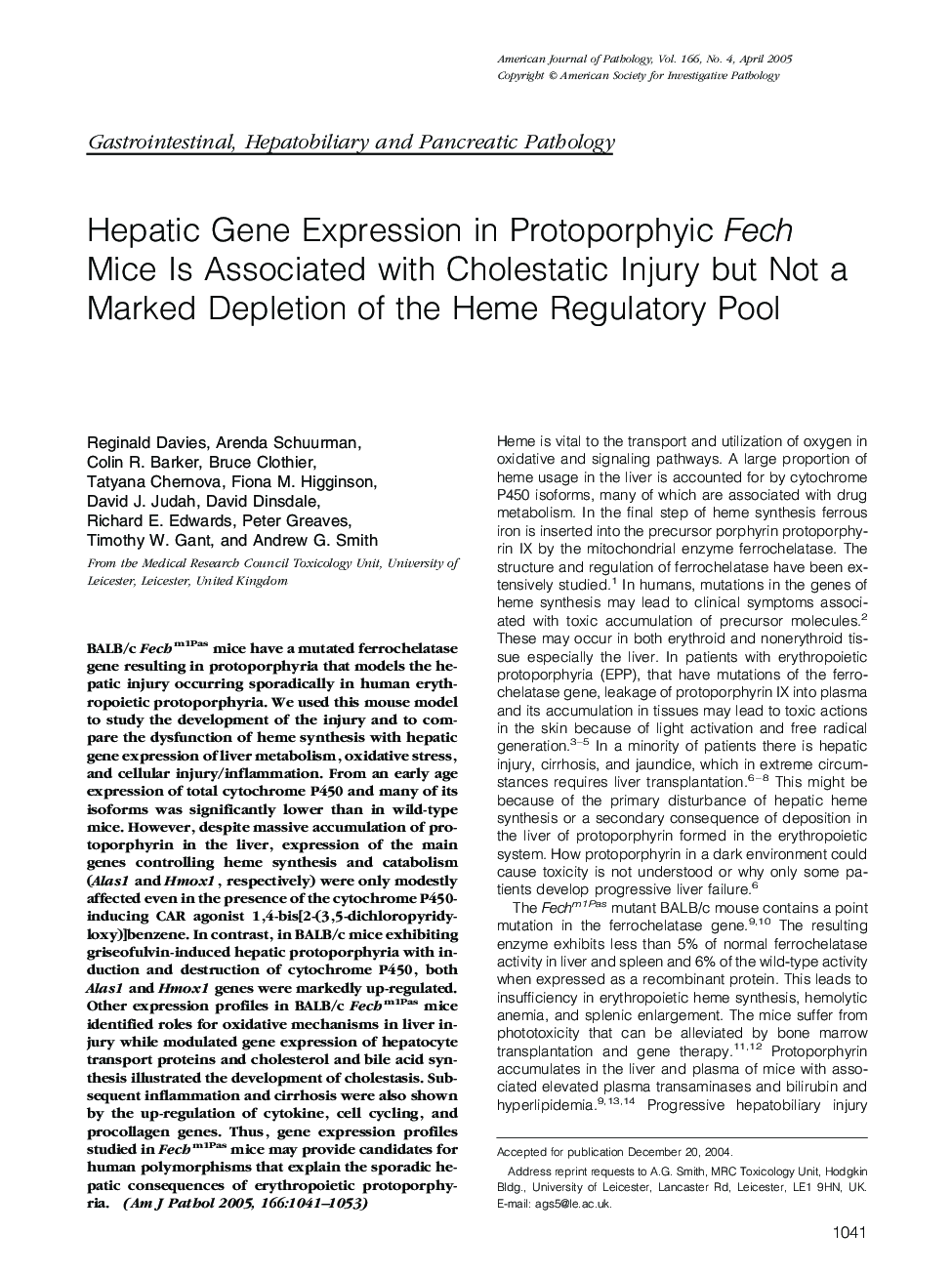| Article ID | Journal | Published Year | Pages | File Type |
|---|---|---|---|---|
| 9943402 | The American Journal of Pathology | 2005 | 13 Pages |
Abstract
BALB/c Fechm1Pas mice have a mutated ferrochelatase gene resulting in protoporphyria that models the hepatic injury occurring sporadically in human erythropoietic protoporphyria. We used this mouse model to study the development of the injury and to compare the dysfunction of heme synthesis with hepatic gene expression of liver metabolism, oxidative stress, and cellular injury/inflammation. From an early age expression of total cytochrome P450 and many of its isoforms was significantly lower than in wild-type mice. However, despite massive accumulation of protoporphyrin in the liver, expression of the main genes controlling heme synthesis and catabolism (Alas1 and Hmox1, respectively) were only modestly affected even in the presence of the cytochrome P450-inducing CAR agonist 1,4-bis[2-(3,5-dichloropyridyloxy)]benzene. In contrast, in BALB/c mice exhibiting griseofulvin-induced hepatic protoporphyria with induction and destruction of cytochrome P450, both Alas1 and Hmox1 genes were markedly up-regulated. Other expression profiles in BALB/c Fechm1Pas mice identified roles for oxidative mechanisms in liver injury while modulated gene expression of hepatocyte transport proteins and cholesterol and bile acid synthesis illustrated the development of cholestasis. Subsequent inflammation and cirrhosis were also shown by the up-regulation of cytokine, cell cycling, and procollagen genes. Thus, gene expression profiles studied in Fechm1Pas mice may provide candidates for human polymorphisms that explain the sporadic hepatic consequences of erythropoietic protoporphyria.
Related Topics
Health Sciences
Medicine and Dentistry
Cardiology and Cardiovascular Medicine
Authors
Reginald Davies, Arenda Schuurman, Colin R. Barker, Bruce Clothier, Tatyana Chernova, Fiona M. Higginson, David J. Judah, David Dinsdale, Richard E. Edwards, Peter Greaves, Timothy W. Gant, Andrew G. Smith,
